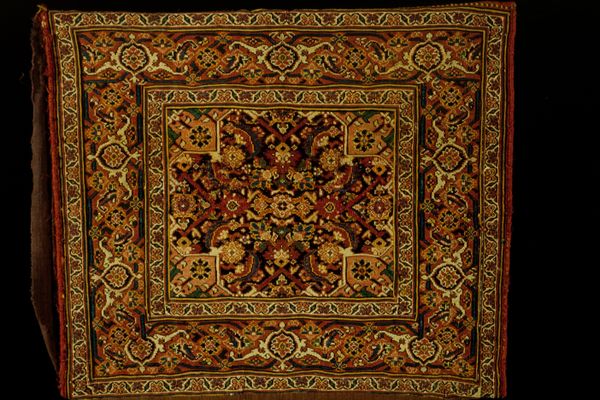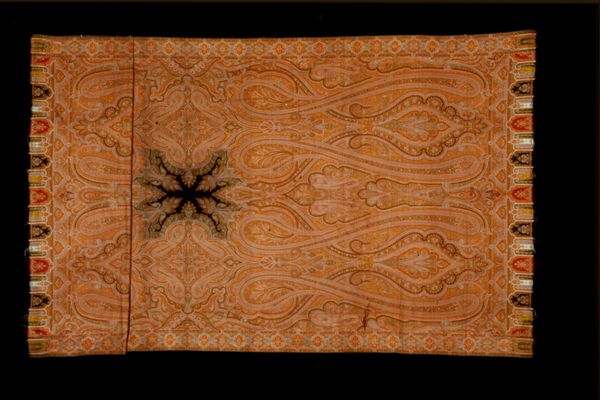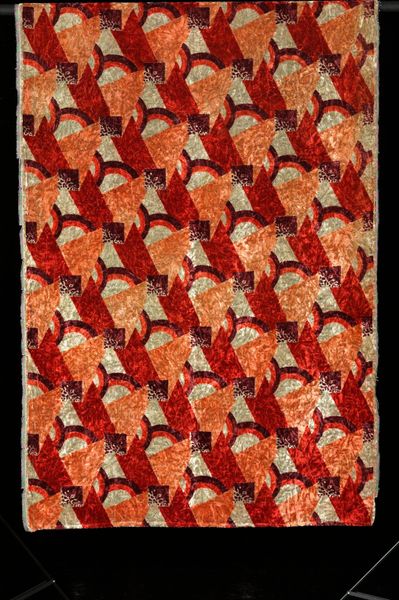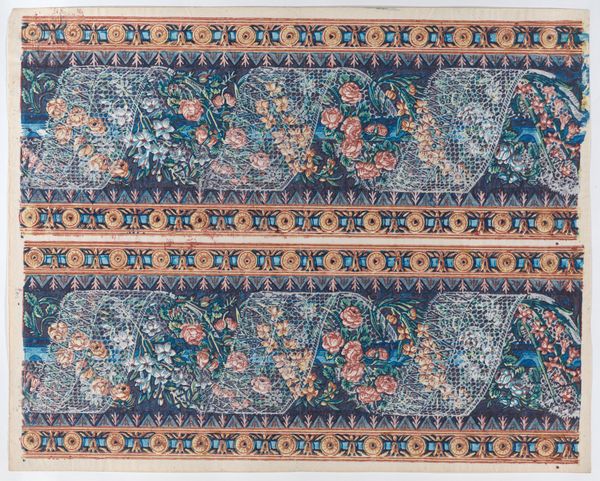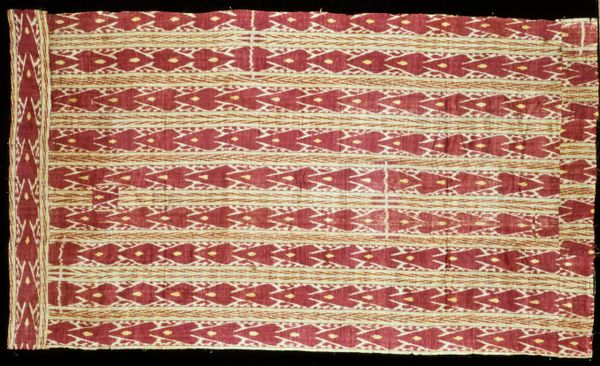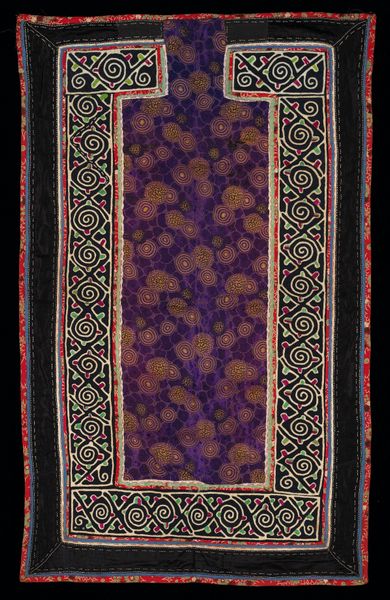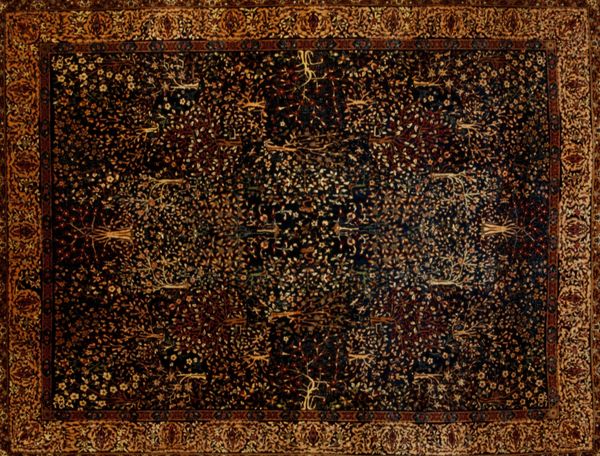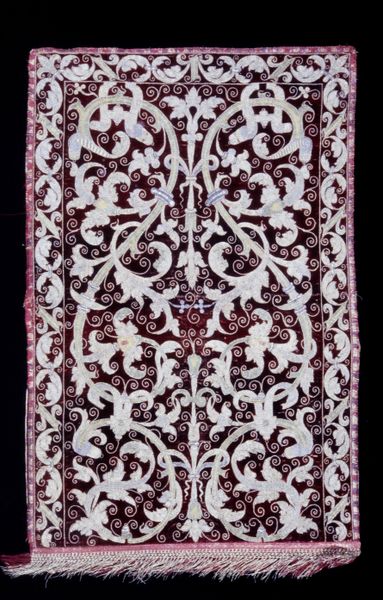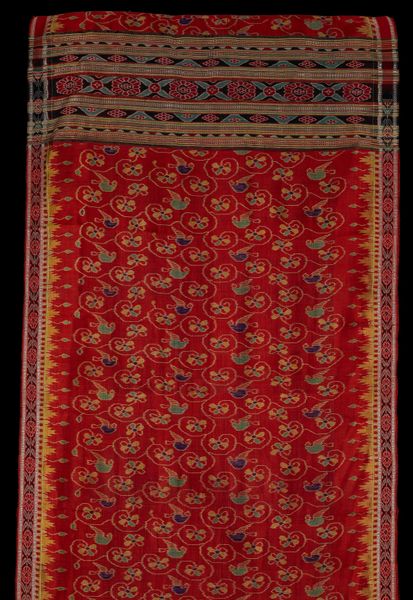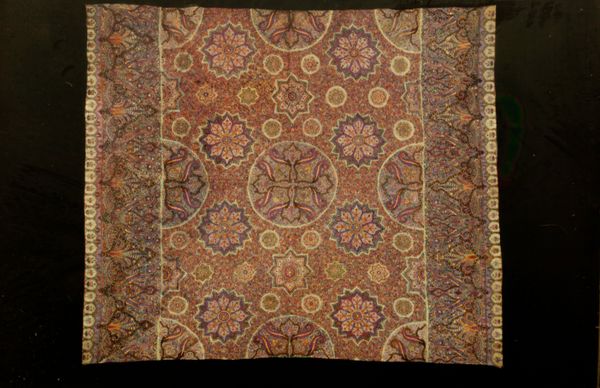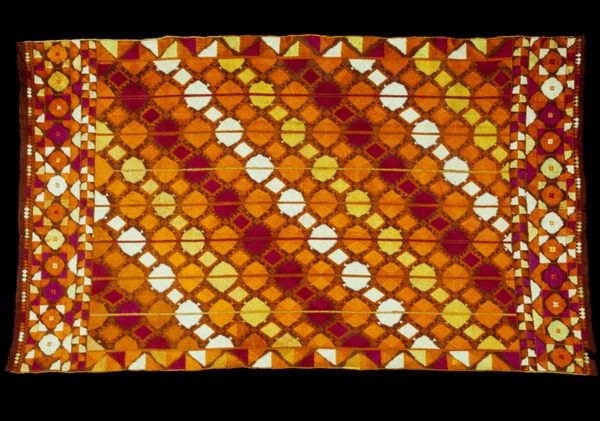
fibre-art, weaving, textile
#
pattern heavy
#
natural stone pattern
#
fibre-art
#
weaving
#
textile
#
collage layering style
#
geometric pattern
#
ethnic pattern
#
repetition of pattern
#
pattern repetition
#
textile design
#
layered pattern
#
motif
Copyright: Public Domain
Editor: Here we have an intricate Khilim Rug from around the 19th century, currently residing at the Minneapolis Institute of Art. It’s a beautiful textile work. What stands out to me is its dense, almost overwhelming pattern. How do you interpret its visual language? Curator: This rug speaks volumes about the historical context of cultural exchange and the power dynamics inherent in the orientalist aesthetic. These textiles were often produced for a Western market eager to consume "exotic" goods, reinforcing unequal relationships between colonizer and colonized. How does the repetitive nature of the pattern strike you, considering this historical lens? Editor: I see the repetition now, like a constant assertion of this “otherness” that was being marketed. It’s beautiful, but almost...formulaic. Curator: Precisely. And let’s consider the role of women, who were often the weavers of these intricate patterns. Their labor was crucial, yet often invisible and undervalued. To what extent can we consider such works as expressions of agency, even within oppressive conditions? Editor: That’s fascinating, thinking of this rug as a potential, albeit perhaps constrained, form of expression. So it's both a product of oppression and, potentially, resistance? Curator: Absolutely. It's a complicated equation. The geometric patterns and motifs – the repeated elements - while beautiful, are laden with historical meaning that reflect broader cultural narratives. We can learn much about identity, labor, and the dynamics of cultural exchange if we know where to look. Editor: This has completely shifted how I see it. Thank you! I am going to explore the socio-economic dimensions in more detail. Curator: Excellent. That is exactly the kind of questioning that these pieces should incite.
Comments
No comments
Be the first to comment and join the conversation on the ultimate creative platform.
